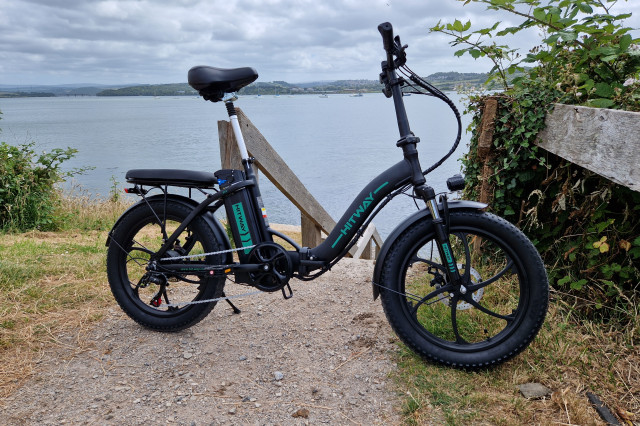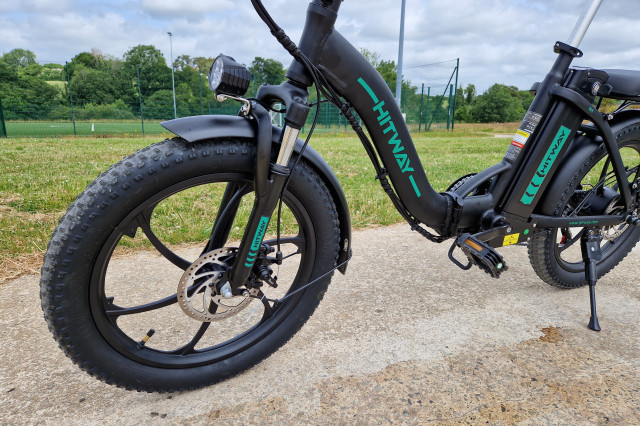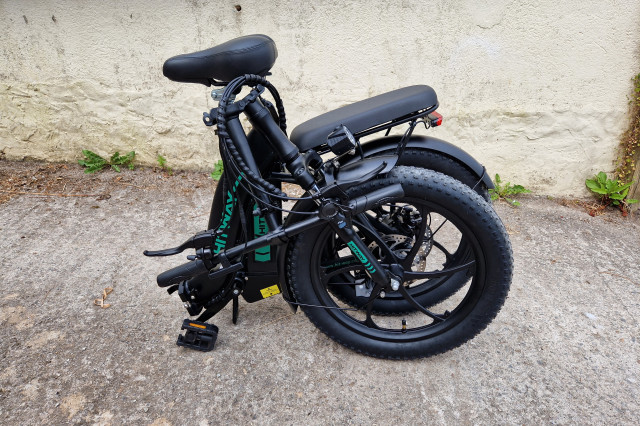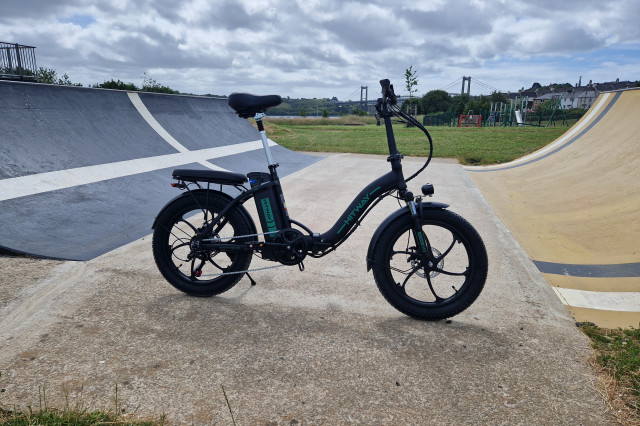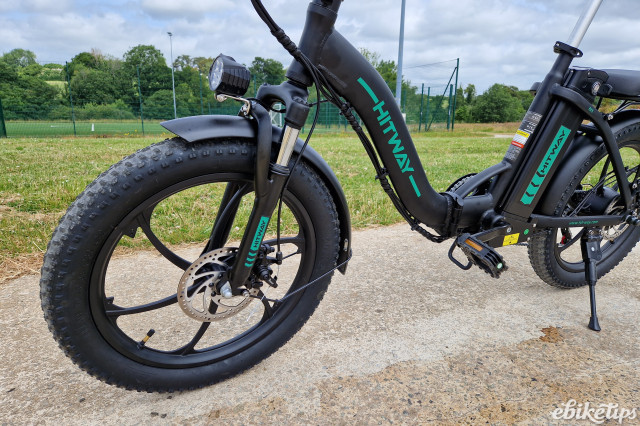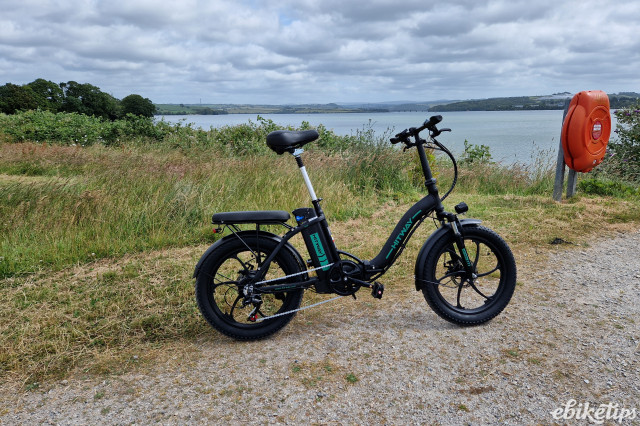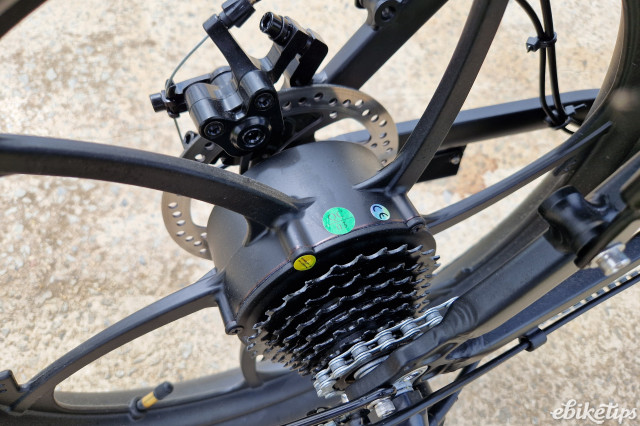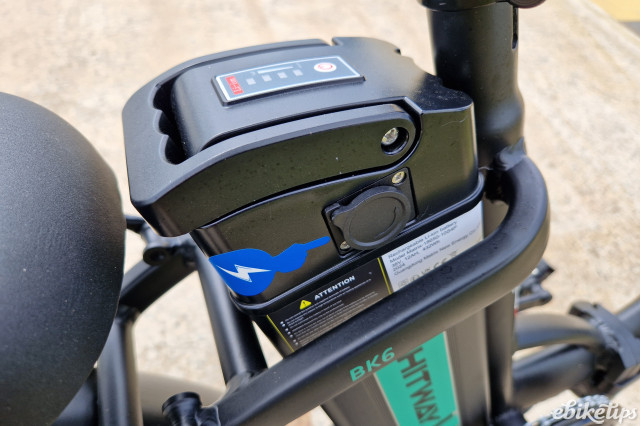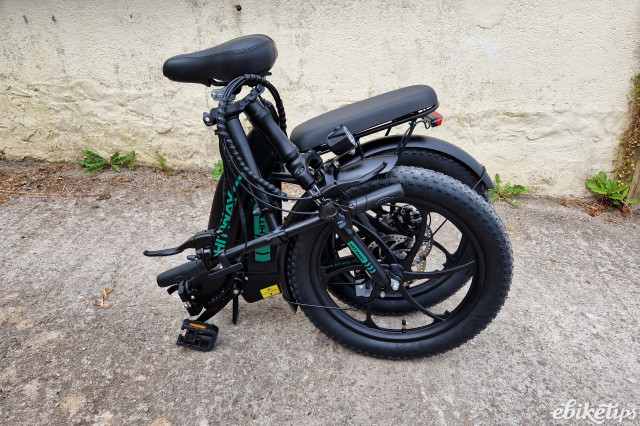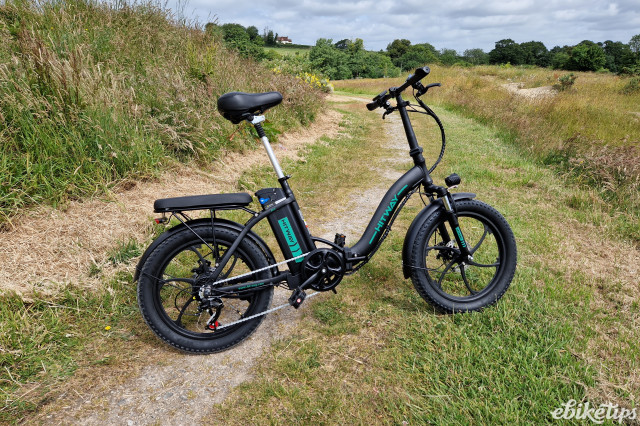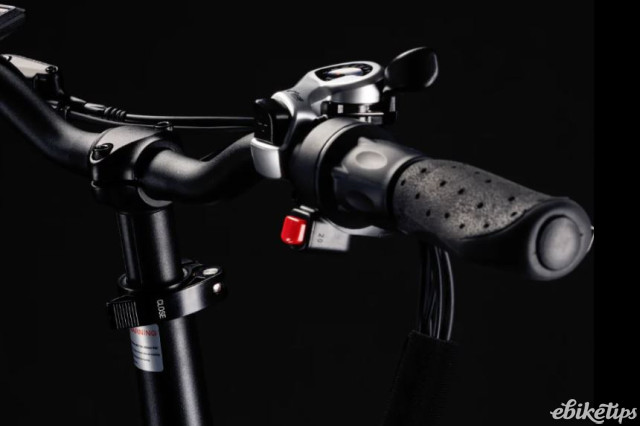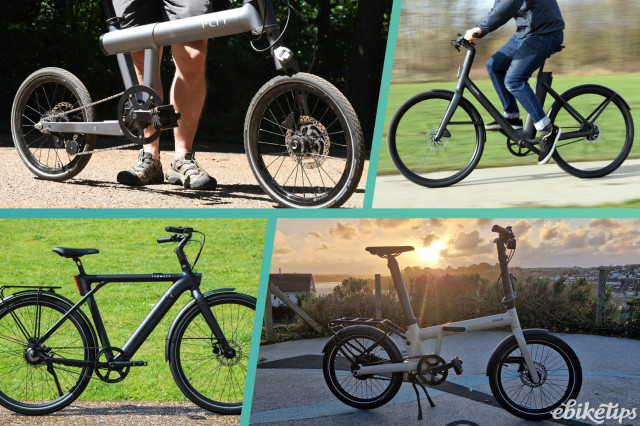Review: Hitway BK6S
Overview
- Price
- Comfortable riding position
- Good accessories
- Motor struggles on steep hills
- The brakes could be better
- Harsh ride at times
Finding a good electric bike for under £700 can be challenging. Compromises such as a lower battery range and budget components often need to be made. However, prices have dropped in recent years, and specifications have improved. The Hitway BK6S is a step-through folding e-bike that aims to offer everything a daily rider needs without breaking the bank.
Hitway is a popular Chinese brand that sells a range of budget e-bikes. Priced at £699, the BK6S tested here has a decent specification for the money: a foldable step-through frame, lights, mudguards, and a 250W motor with a respectable 432Wh of battery power.
There’s even a padded seat atop the pannier rack for carrying a small pillion passenger (more on that later).
The test bike arrived promptly and well-packaged. It came folded in a large but manageable box and required minimal assembly. The package included an instruction manual, a battery charger, some tools, and a tyre pump. It took roughly four hours to charge the battery fully.
The ride
I headed off on a 10-mile loop of my local lanes for my first ride. The Hitway has a familiar feel about it — the display, gear shifter, and saddle are all used on similar e-bikes I’ve ridden. Even the motor has that familiar (and annoying) delay in the pedal assist, but beyond that the power delivery feels more subtle.
There are three power settings to choose from, which offer different maximum assisted speeds of 9, 12 and 15mph, respectively. Pressing and holding the minus key activates the 6km/h walk assist. Pedalling beyond the assistance limit or without power requires a concerted effort. I don’t think this is down to any drag from the motor, but likely the bike’s weight and rolling resistance from the big tyres.
My test route included several long and draggy climbs - not particularly steep but with an average gradient of 6% over a couple of miles. The motor had no problem getting me up these hills comfortably.
Towards the end of the ride, there was a harder climb with a 20% ramp at the end. This is where the bike (and I) really struggled. Bearing in mind that I have a decent level of cycling fitness, a less fit rider may need to get off and push in similar circumstances. (This is where the walk assist would be invaluable).
The Hitway is a heavy bike at 28kg, but on the road, it feels okay. The handling is predictable, and the bike tracks well enough through higher-speed twists and turns. At lower speeds, I didn’t have any problems manoeuvring the bike through obstacles on my local cycle path. I feel that having 3in tyres definitely improves lower and higher speed handling (as opposed to the 4in tyres commonly found on cheaper e-bikes).
With a height-adjustable handlebar and plenty of adjustment in the seatpost, I found the Hitway reasonably comfortable to ride. My only complaint is the big saddle. I’ve never gotten on with these saddles. Despite their generous cushioning, the backs of my thighs get sore after a few miles.
The front suspension fork does its job on smaller potholes but quickly reaches its limit on things like speed bumps. The suspension seatpost works okay on smoother road surfaces but did bounce me up and down like a pogo stick on bumpier country lanes.
My takeaway from the first ride was that the BK6S is definitely happier on less hilly terrain. I think it would make a great urban commuter. The battery lost two bars out of five over the 10 miles, but I kept it in the highest assistance level and climbed a total of 1,000ft.
Specification
The aluminum step-through frame has a stealthy matte black finish with contrasting green decals. The overall finish is good, and the welds look neat. There's no internal cable routing, so there are a bunch of coiled-up cables running down the underside of the frame.
The rear hub motor is unbranded and sounds and feels the same as dozens of others I’ve tested. It has no quirks or redeeming features, but it does the job. As mentioned, the cadence sensing pedal assistance features the usual delay, which can make hill starts or pulling away from junctions challenging. There’s no throttle to fall back on either, so you’ll need to leave plenty of room for approaching traffic.
The S866 display is a familiar budget display used on many e-bikes. It has pretty good functionality and is clear and easy to read.
The 432Wh removable battery is mounted vertically behind the seatpost. I couldn’t find out what cells are used, but it does have the necessary EU safety certification. The claimed range of 56 miles is unrealistic for the everyday rider in the UK. I was down to one bar after 24 miles, which, considering my weight and hilly location, is acceptable. To remove the battery, the saddle is on a hinged catch. Once the battery is locked, the key cannot be removed - a quirk I have seen on many similar e-bikes.
Mechanical brakes and Shimano Tourney gearing are the norm on a cheap e-bike. The gears needed a little tweaking out of the box. With a 14-28 7-speed freewheel, the gear range is limited and best suited to moderately hilly terrain. Although the brakes worked okay, they felt vague and pulsed when applied. I would be inclined to spend £45 and upgrade the brakes to something like Clarks Clout Hydraulics, which would transform the braking performance.
The wheels are a six-spoke alloy mag wheel design - this negates the need to worry about broken spokes, but it does add considerable weight to the bike. The unbranded 20in x 3in tyres offer a good compromise between regular and fat tyres. I haven’t had any issues during the testing period, although several Amazon reviews mention poor puncture resistance. The grip and general feel of the tyres have however been acceptable.
Suspension is provided at both ends. Up front, there’s a lockable coil-sprung fork, which is okay for poor road surfaces, but it does clatter when riding down steps or jumping off kerbs. There isn’t any proper suspension at the back, just a sprung seatpost. This gives a bouncy sensation when riding but still transmits road bumps to your behind.
When it comes to accessories, the Hitway is generously equipped. It has metal full-length mudguards, front and rear lights, a kickstand and a pannier rack seat. I’ve carried my nine-year-old daughter on the back briefly and at low speed. Unlike a proper cargo bike, there aren’t any foot pegs, and there’s no protective barrier between their feet and the rear wheel. I would only recommend low-speed travel, as the seat is more of an afterthought, and the bike isn’t designed for carrying a passenger this way. By all means, fit a proper seat, but don’t rely on what’s provided.
Comfort and sizing
There is quite a lot of adjustment in the height of both the seatpost and handlebar. My 11-year-old daughter can ride it at just over 5ft, and I’ve had no problems with it at 6ft. When you sit on the bike, the suspension seatpost tends to sag by an inch or so, and you’ll need to consider that to ensure your optimal riding height.
The riding position is relaxed on the road, but the back end feels a little harsh despite the big tyres, saddle and suspension seatpost.
Folding and transportation
Folding the Hitway is straightforward enough and, with a little practice, can be done fairly quickly. The handlebar folds inwards, and the frame folds in the middle. The folding clamps have a somewhat utilitarian look and feel, but they function adequately, and there wasn't any play in the folding joints.
Once folded, you’ll need to be fairly strong to carry it. I wouldn’t recommend attempting it if you have the slightest hint of a back problem. Due to its bulk, it’s not only heavy but also awkward. It won’t suit crowded public transport but should fit in a hatchback or estate car with lowered back seats.
Alternatives
Although the Hitway offers excellent value, quite a few viable alternatives fall within a similar price range.
I recently tested the PVY Z20 Plus, which costs a little more at £949. The PVY has dual suspension and a lively motor. Although the battery has a bigger energy capacity at 696Wh, I found the range similar to what I’ve been achieving with the Hitway. The Z20 Plus uses the bigger 4in tyres, making it bulkier and less easily transported than the Hitway.
The Gin X costs a little more at £999, but comes from a UK-based brand. It features a 48V Bafang rear hub motor with 615Wh battery and hydraulic disc brakes. I spent a month riding the Gin last year and found it to be a thoroughly decent e-bike for the money.
We have yet to test the new Eskute C100 but we've had a couple of their bikes in previously. The C100 is currently reduced from £949 to £619, making it a good alternative to the Hitway. The Eskute features a step-through frame with a rear hub motor and 375Wh battery. Unlike the Hitway, it does not have a folding frame, but we think it’s worth considering at its current price.
The verdict
Putting any e-bike snobbery aside and looking at the Hitway purely as a means of getting from A to B, it’s hard to criticise, especially considering the sub-£700 price tag. As a daily workhorse, it functions perfectly well. Yes, it’s heavy, the ride can be harsh, and it struggles on steep hills, but you can overlook these things if you want simple, cheap transport. Despite the unseasonally inclement weather, it has performed this task reliably throughout the testing period.
1 comments
Is that rear rack / seat safe for someone to sit on, what's the load rating? Is it wise to encourage someone to sit there?
